12 Tips To Boost Your Garden Output. Nearly every gardener I know wants to get more out of their Vegetable Patch, without spending more time or increasing the size of the garden. Here are 12 tips that will give you more output with less effort.
1. Create A No Dig Garden
Utilising the No-Dig gardening technique, is an excellent way to boost productivity for any garden. Not only does it increase the yield of a garden by improving the quality of the soil, it also reduces that amount of work required to maintain a garden, which allows you to focus on other activities that will help to improve the yield of the output of the garden.
A study, over a 7 Year period, by Charles Dowding has shown that there is a 10% gain in volume of produce, across a range of different vegetables. To see more details on this study, click on the link.
The other key benefits of a No Dig garden, is that the garden beds are always ready for planting, which ensures that you can plant straight away when space becomes available. Additionally, no other inputs are required such as fertilisers to optimise growth.
To convert your existing garden to a No Dig garden, simply apply a 10cm (2 inch) thick layer of compost to your existing garden beds. Commercially available compost, such as Mushroom Compost works well for this purpose or you can use homemade compost. There is no need to dig the compost into the soil, simply plant directly into the compost layer when you are ready.

To maintain a No Dig garden, make sure that you remove any weeds as they appear. However, I can tell you from first hand experience, that the layer of thick mulch reduces the number of weeds dramatically. An additional layer of compost should be applied annually. The best time to do this is around late Autumn, as an application around this time suppresses weeds completely for several months.
To learn more about this technique, go to https://planyourpatch.com/how-to-prevent-weeds-from-growing/.
2. Sowing Into Modular Trays
Another really beneficial practice that will increase the output of your vegetable garden is to plant seeds in trays, rather than directly into the garden. There are several benefits to doing this that will significantly increase your output.
Firstly, by sowing all your crops in trays, the time in the ground is minimised. This leaves space for other crops to be planted. The second key benefit to planting in trays, is it allows you to start plants before the first frost, which will extend the season by 4 to 6 weeks. Other measures that can be taken to extend the season are discussed later in the article.
However, there are some crops such as Carrots and Parsnips that we would not recommend planting in trays. This is because they have a tap root which can be damaged when transplanted. These particular vegetables can be tricky to grow from seed, to get more information on how to overcome these problems, click on the links above.
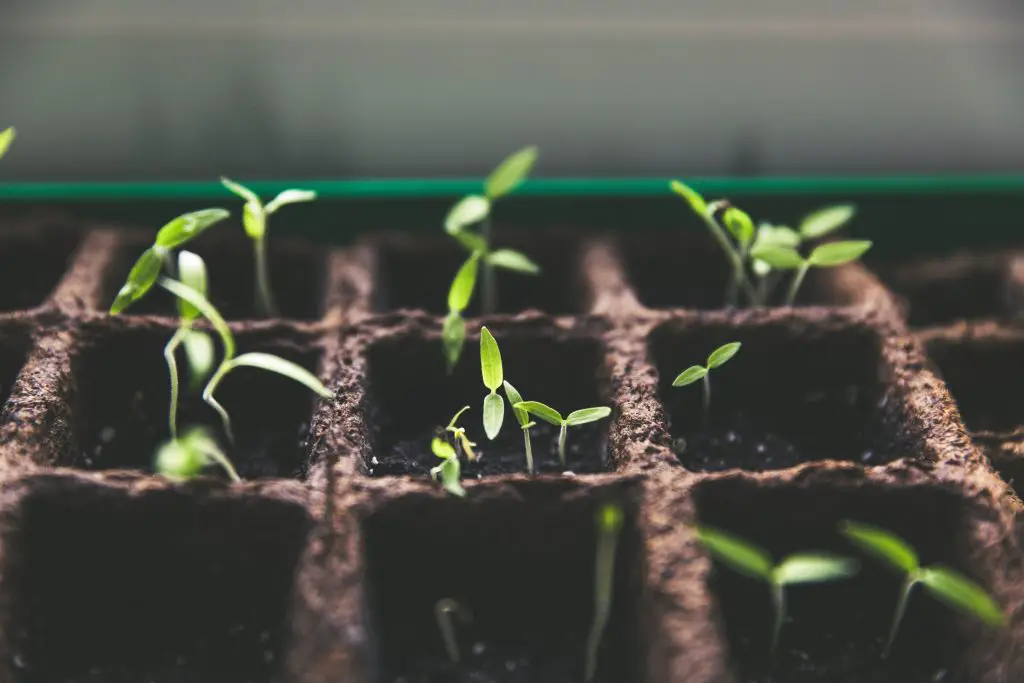
Another obvious vegetable that cannot be planted in trays is Potatoes, however, the harvest here an be accelerated by Chitting the Potatoes before planting. For the uninitiated Chitting is when the Seed Potato is exposed to light, prior to planting, which accelerates the harvest. To learn more about this, go to https://planyourpatch.com/should-you-chit-potatoes/.
3. Spacing Plants Properly
Providing adequate space for your plant to develop is important as it will maximise the size that your plant reaches. Too often, gardeners try to cram too many vegetables into a small space and in many ways, this is counter productive, as the yield often does not increase. Additionally, it makes it harder to maintain the garden, as the removal of weeds needs to be done by hand.
I generally avoid spacing the plants (or clumps of plants) any closer than 20 cm (8 inches), as this allows me to Hoe between plants, which is significantly faster than hand weeding. To avoid the temptation to plant any closer than my intended spacing, I always use a board with pre-marked distances, as it is quick and easy.
However, as you will see later in the article, there are certain plants that can be planted in clumps, without affecting the yield.
4. Use Interplanting
Interplanting is another technique that can be used to optimise the output of your garden, but is only really viable if you are disciplined with your spacing.
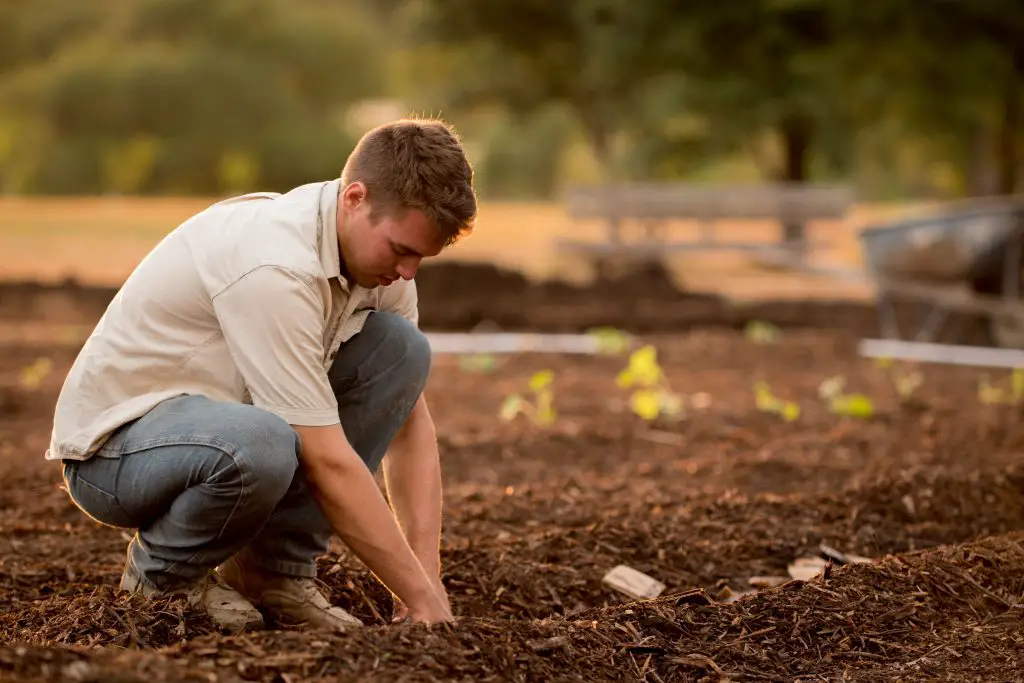
This technique involves planting small seedlings in between mature vegetables that are almost ready to pick ie within the next 3 to 4 weeks. This technique takes advantage of the fact that young seedlings do not require much space in the first few weeks. This accelerates the harvest period by around 4 weeks.
There is a really good video by Charles Dowding that shows how this technique has been used repeatedly, to optimise the output of a small space.
5. Multi-Sow Seeds
Multi-sowing of seeds is a technique that allows the gardener to plant more vegetables in a given space. The technique involves sowing plants in clumps, rather than as a single plant. This technique is generally only suitable for root crops and some leafy vegetables. A table of the ideal number of plants per clump, is shown below.
| Vegetable | Desired plants per clump |
| Basil | 2 or 3 |
| Beetroot | 4 |
| Chard | 2 |
| Chervil, Coriander, Dill, Parsley | 2 |
| Fennel, Florence | 2 |
| Kale For Salad | 3 |
| Leek | 4 |
| Onion For Bulbs | 4 |
| Spring Onions | 10 |
| Peas And Snow Peas | 2 |
| Radish | 4 |
| Rocket, Salad And Wild | 2 |
| Spinach For Salad | 3 |
| Turnip | 4 |
To create these clumps of plants start by sowing the seeds in modular trays, ideally plant one or two more seeds than the number of plants you want in a clump ie for Turnips, ideally we would like 4 plants per clump, so we sow 5 or 6 seeds per module. The reason this is done, is to ensure that we get at least the desired number of plants per module. If there is a higher number of seedlings per module, they can be thinned out prior to planting.
If you do not thin out the clumps prior to planting, you will generally observe that the size of each plant will be smaller. For example, leaving more than 4 Onions in a clump will result in the production of smaller bulbs, which in some cases, may be advantageous if you are wanting to have small Onions for pickling.
The other key benefit of multi-sowing, is that it reduces the amount of time required to plant seedlings out in the garden. The reduction is typically half to three quarters, of the time.
Other vegetables not mentioned in the table above are generally better to be planted as single plants. To learn more about this technique, watch the video below from Charles Dowding.
If you like that video, you may find it useful to also watch Charles’ video on Onions and Spring Onions which shows a practical application of the technique from planting seeds, all the way through to harvesting the crop.
6. Use Companion Planting
Companion planting is another very useful technique that allows a gardener to extract additional produce from the garden. It is distinct from Interplanting, as discussed earlier in the article, because the planting of multiple vegetables in the same space does not rely upon one of the vegetables being removed. It is instead the selection of complementary vegetables that will mature together.
One of the oldest examples of this is the “Three Sisters” method, where Corn is planted with Climbing Beans and Pumpkin. The Beans are a Legume that provides Nitrogen to the soil, while climbing up the Corn for support. The Pumpkin provides ground cover for the Corn, reducing weeds and moisture loss. To learn about Beans, click on https://planyourpatch.com/what-is-difference-between-dwarf-beans-and-climbing-beans/. To learn more about Pumpkin, click on https://planyourpatch.com/can-i-plant-pumpkin-seeds-from-a-store-bought-pumpkin/.
Other variations on the Three Sister method, includes using either Watermelons or Cucumbers as alternative ground covers. To learn about the best varieties of Watermelons to grow, go to https://planyourpatch.com/what-is-the-best-watermelon-to-grow/. To learn about Cucumbers, go to https://planyourpatch.com/why-do-my-cucumbers-bloom-but-dont-produce/.
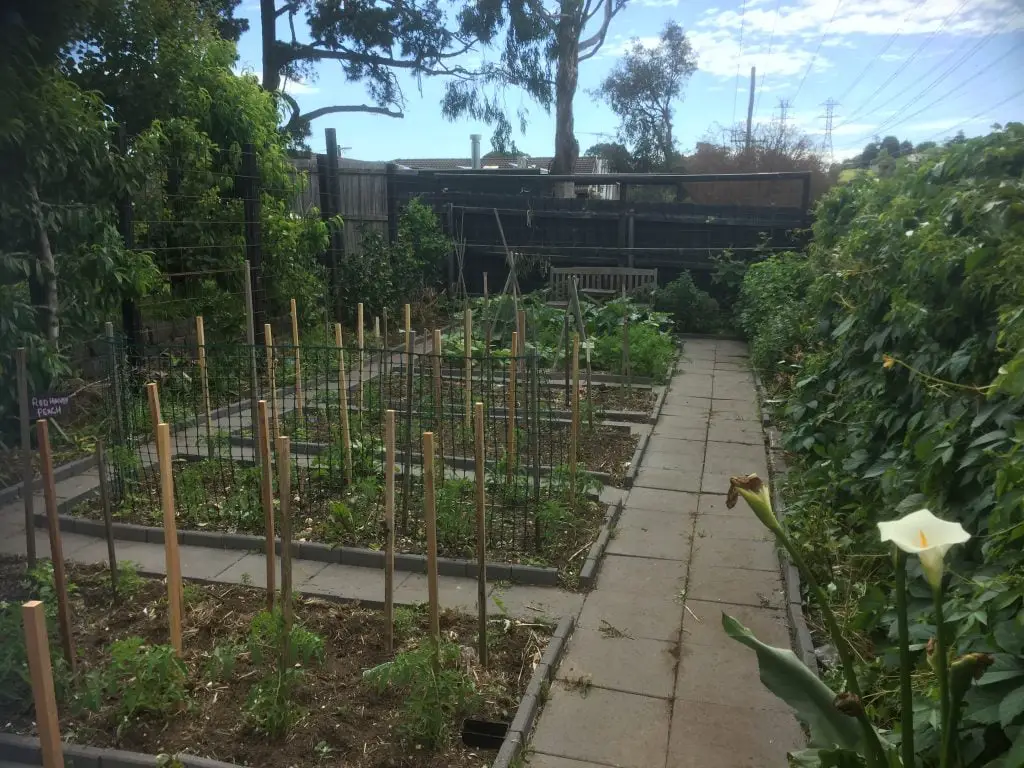
Another example of this, that I commonly use in my garden is Carrots and Tomatoes. Carrots occupy the soil without interfering with the roots of the Tomato plants, while the Tomatoes occupy the bulk of space, above the ground.
There are many possible combinations that could be used. To get a table of some of the complementary combinations, visit the Permaculture Research Institute.
7. Use Vertical Space
One of the biggest opportunities to increase the output of your garden is to take full advantage of vertical space. One of the most common ways to do this is by Espaliering Fruit trees. For those that are unfamilar with the technique, it involves pruning the fruit tree into a 2 dimensional shape. This allows the tree remain compact, while maximising the fruit production.
This technique can be applied to nearly any fruit tree and is ideal for domestic gardeners. On my own quarter property, I have approximately 50 different fruit trees. Many of these trees form the structural walls of my garden, dividing it up into more intimate spaces. There are 2 main types of Espaliers, Formal and Informal. To learn about the difference, click on the link.
While the Espaliers appear to be a lot of work, they actually are not, and they are surprisingly easy to maintain, click here to learn How To Create A Formal Espalier Tree.
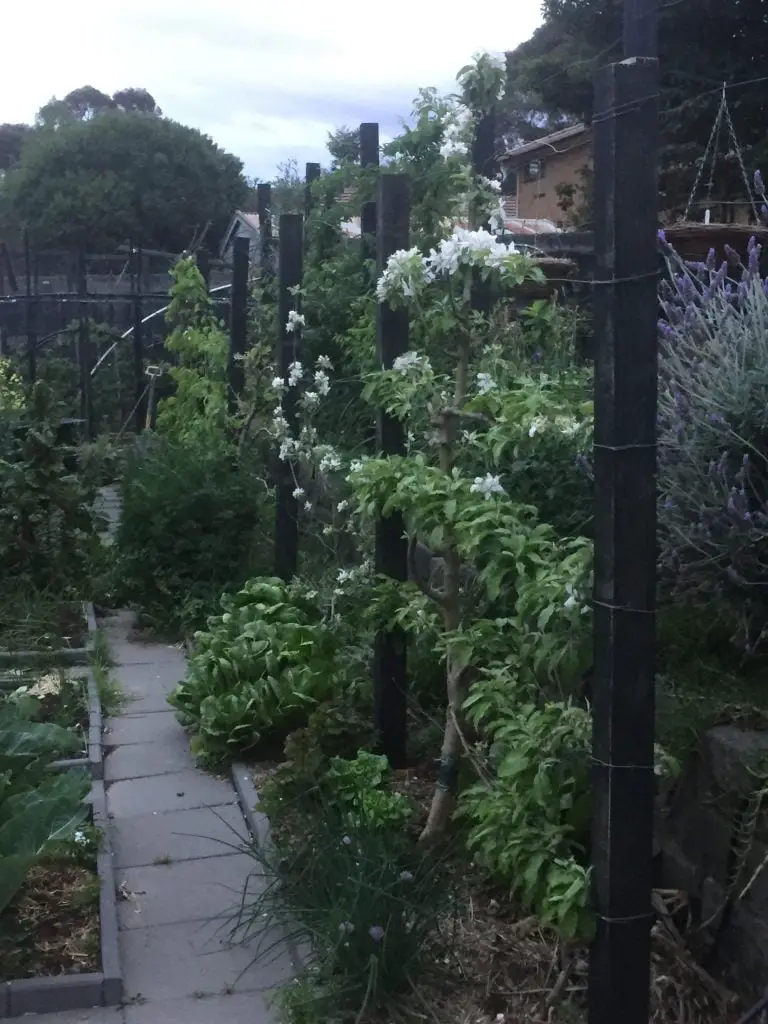
The other area where vertical spaces can be utilised, is with climbing annual crops such as Pumpkin, Beans, Melons and Cucumber. Pumpkins, in particular, take large volumes of space on the ground and are best grown vertically. However, to grow Pumpkins successfully, the structure needs to be sturdy and the varieties with larger fruit would require extra support, to ensure that the fruit did not tear the stem.
8. Utilise The Shadier Areas Of The Garden
Most home gardeners do not take full advantage of the space they have, by using the shade areas of the garden to grow vegetables. This is largely because the common advice for vegetable patches, is to position them in a area that gets at least 8 hours of sun per day.
However, there is a surprisingly large number of vegetables that can be grown in shady location. As a general rule, any plants that do not produce fruit will tolerate a shady position. List of vegetables that can be grown in shady locations, is provided below.
- Arugula
- Asparagus
- Beetroot
- Bok Choi
- Broccoli
- Brussels Sprouts
- Cabbage
- Carrots
- Cauliflower
- Celery
- Chinese Cabbage
- Garlic
- Kale
- Kohlrabi
- Leeks
- Lettuce
- Parsnip
- Peas
- Potatoes
- Radish
- Rhubarb
- Rutabaga (Swede)
- Spring Onions
- Spinach
- Swiss Chard (Silverbeet)
- Turnip
9. Extend The Growing Season
There are a number of different techniques that can be used to extend the growing season to allow larger volumes of food to be produced.
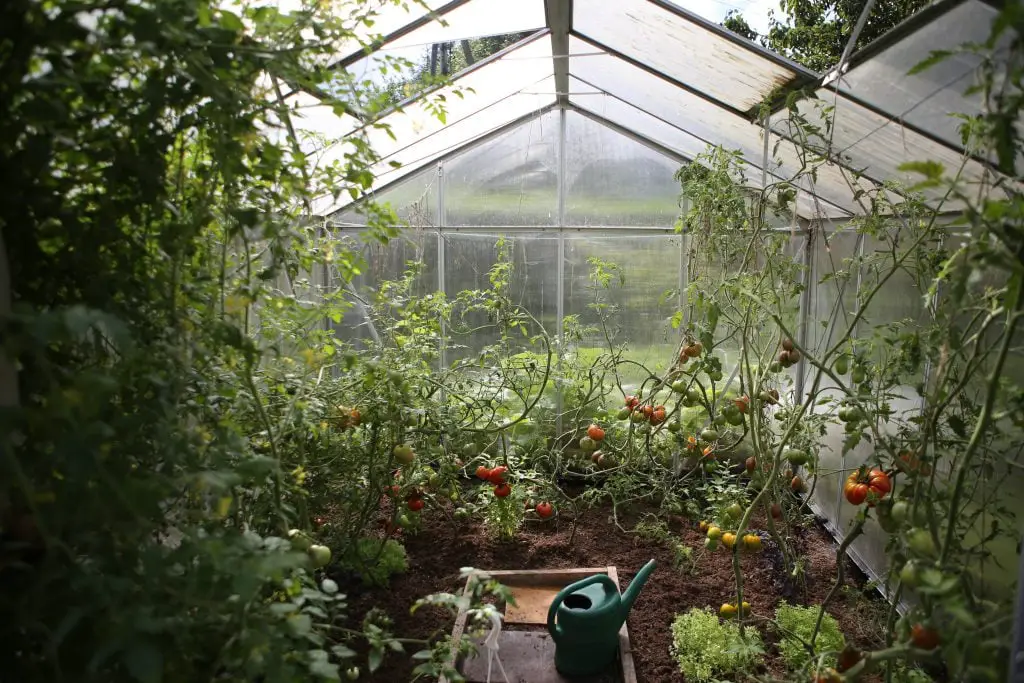
Planting Seeds Undercover. This is the most common technique used by gardeners, particularly for frost sensitive vegetables, at the start of the season. However, this technique can be expanded to raising seedlings beyond the normal 6 week period to increase their size more rapidly, in the early part of the season.
Utilising Cloches, Row Covers And Cold Frames. These items are most useful from mid Autumn to mid Spring when the weather begins to warm up. In colder areas, Winter protection is an absolute necessity for plant survival.
For cloches, which will cover a single plant, were recommend GrowAway’s Garden Cloche Dome because they are low cost and have an adjustable vent.
For Row covers we suggest Growsun’s Garden Tunnel Plant cover because it is low cost, relatively tall allowing a range of plants to be accommodated and can be anchored firmly into the ground making it more resilient in windy conditions.
Cold frames may also be used to protect plants however they are relatively expensive and only cover a small area if purchased through Amazon. For this item I would suggest making your own using an old glass door rather than buying it. All the items may be found on Amazon by clicking the links above.
Using Hot Beds. Hot Beds were used in the Victorian era to create a warm environment, in the early part of the season. If well constructed, they can increase the soil temperature by up to 10C. They are constructed using fresh manure that then decays, releasing heat in the process. For most gardeners this is not something that is a realistic option, because of the volume of material required to generate and retain the heat, for a sufficiently long period of time.
The alternative is use a soil heating cable as it will give more control over soil temperatures and you will be able to heat a much greater area. There several different cables available on the market, however the one we recommend is Jump Start JSHC48 due to its length, 48 ft. It is far better to by a longer cable as it allow a greater area of soil to be warmed. It is available on Amazon click here to see the item.
10. Growing Plants At The Optimum Time
Many seed packets provide a very broad window of when vegetables can be sown, to appeal to the broadest number of gardeners. However, this information cannot be relied on 100%, to provide information on the ideal times to plant. I have also noted, that in some cases the information on seed packets can be wildly inaccurate, particularly when it comes to the time to harvest. Click here for more information.
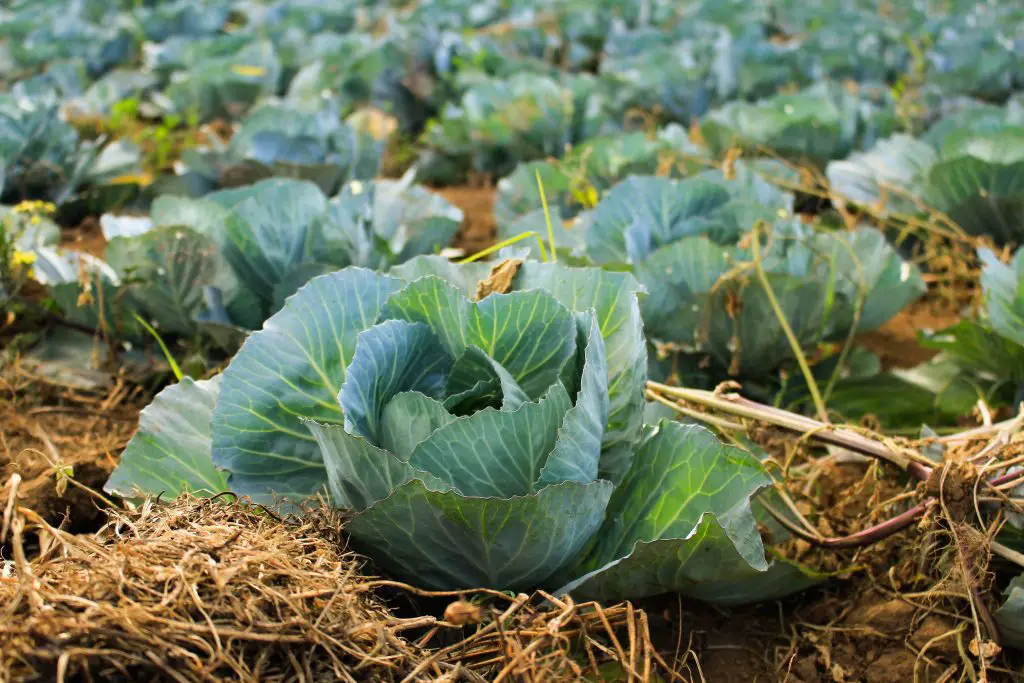
An example of this is Kohlrabi, which can be sown in Spring, Summer and even Autumn if the Winters are relatively mild. When Kohlrabi is planted in the Spring, the size of the stem that can be harvested is limited to the size of a golf ball, as the plant flowers in late Spring. The process of flowering causes the stem to become woody and inedible and thus, the plant needs to be harvested when relatively small.
However, if the Kohlrabi is Sown in Summer, after the flowering period, the growing period can be extended allowing the plant to produce a much larger harvest. Similar observations occur with other vegetables such as Pak Choi, Kale, Beetroot and Swiss Chard, which tend to flower in Spring, rather than Autumn.
These limitations on sowing timing, within the growing season tends to apply to leaf and root vegetables, rather than fruiting plants such as Tomatoes, Cucumber, Zucchini and Pumpkins which you want to flower. So when planting vegetables, try to do as much research as possible to identify when the best time is to plant.
11. Grow High Yielding Crops
The selection of what you grow in the garden also has a large bearing on the volume of food produced in the garden. The output can be significantly affected by both the type of the vegetable and the variety grown.
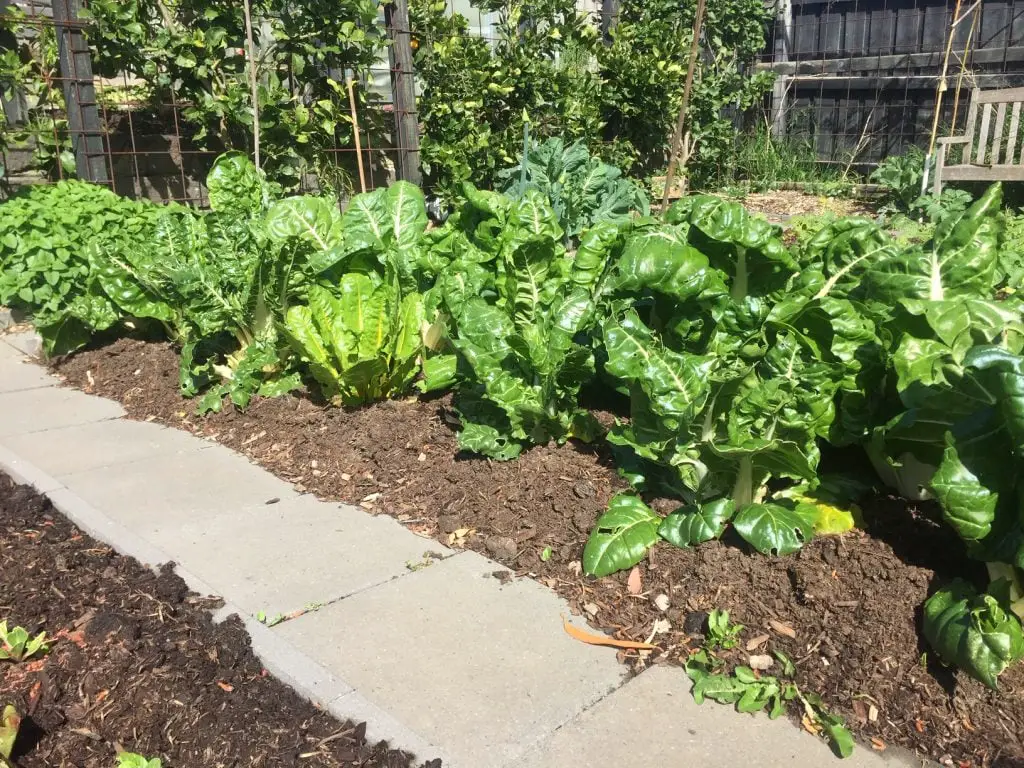
An example of this, is the growing of leafy Greens for cooking. There are several vegetables that could be used that includes Spinach, Silverbeet, Kale, Pak Choi or Bok Choi. Of the choices listed, Silverbeet will produce, by far, the largest harvest and therefore is the obvious choice. This assumes that you like Silverbeet and are willing to forgo choice, in favour of harvest volume. A similar comparison could be made between Zucchini and Button Squash, which taste similar but have vastly different yields. Zucchini plants can produce upwards of 30 kg (60lb) per plant.
The choice of variety within a vegetable can also have an equally large impact on yield. In a study by the University of California, which compared 17 varieties of Watermelon, they found the yield varied from 80 kg (150 lb), down to 8 kg (16 lb). To read more about this study, click here. Similar trial data on different Tomatoes also shows a large disparity in output, click here to view the data. As such, it is best to find independent trials, there is a surprisingly large amount of this information publicly available. One example of this, may be found at the University of Delware.
12. Hand Pollination
Hand Pollination of fruiting crops such as Zucchini, Cucumber, Watermelon, Tomatoes and Peppers is an effective way to ensure that all the flowers produced, convert into a fruit. This is particularly effective if you are observing the appearance of tiny fruit that either drop off the plant, or never get any larger, which is an indication of poor pollination.
Hand pollination can be done using a brush or a “Blossom Set” spray. This spray provides Kinetin, a plant hormone, which causes the flowers to produce fruit, without pollination. It is best to apply it once a week, to the flowers and surrounding foliage, when flowers appear. The spray can be found on Amazon by clicking the link here. To learn more about hand pollination, click here.
